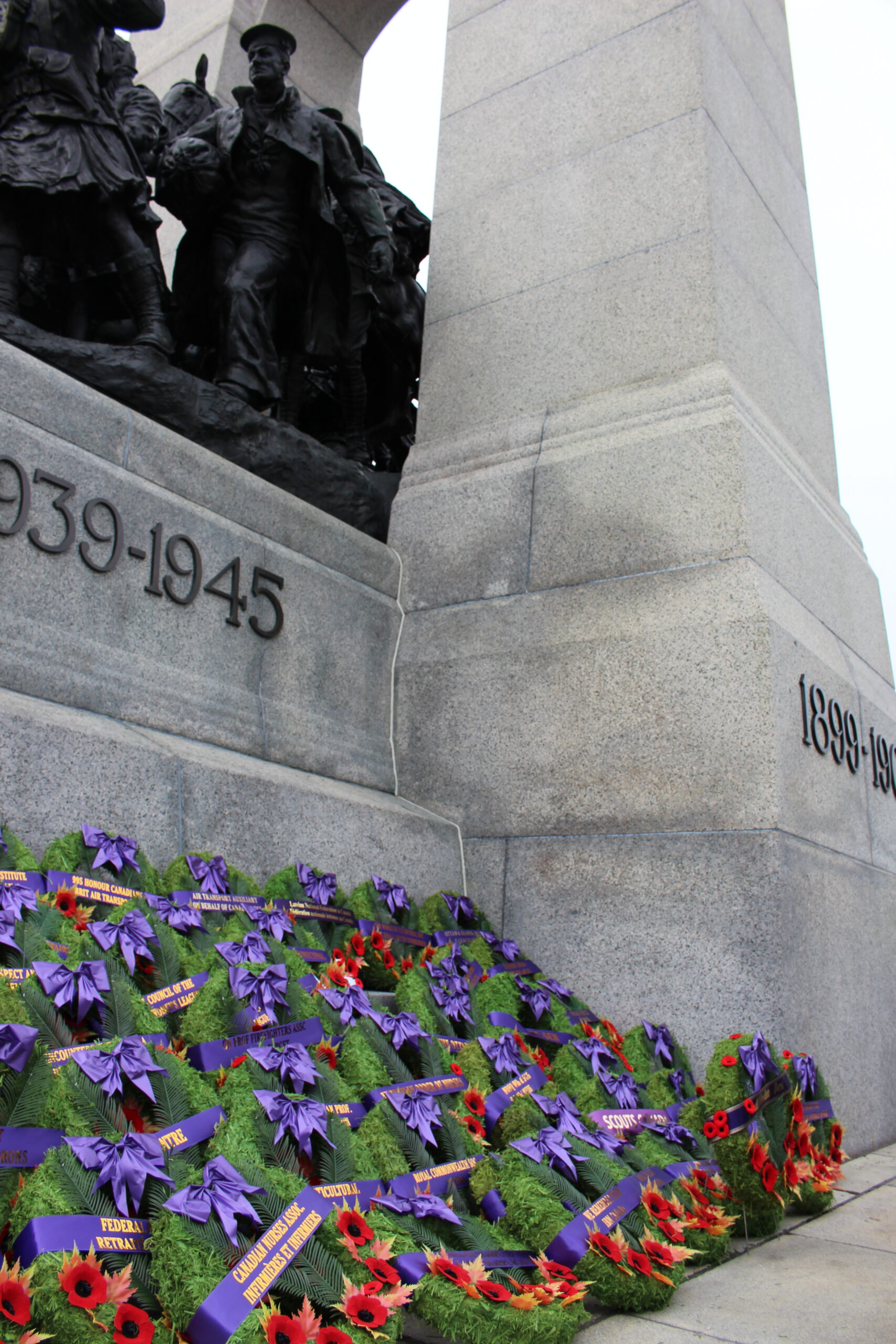Remembering the animals who served in wartime
by Ontario SPCA and Humane Society | Campaigns | November 11, 2021

Today is Remembrance Day, a time to remember the sacrifice of those who fought for our freedom and the safety of our country. For all of this and more, we are incredibly grateful.
In honour of this day of reflection, here are a few stories of animals in war, from our blog Stories of Animals in War and Animals in War: Unlikely war heroes took to the skies.
A special sense: Bomb detectors
Cats were also thought to be able to detect bombs ahead of time, like dogs sniffing out explosives. Soldiers theorized it was due to cats being attuned to atmospheric pressure, or possibly just their “sixth sense.” During World War II, some families would rely on their cat’s senses to alert them ahead of a bomb being dropped and would retreat for safety to air-raid or bomb shelters.
The most famous of these fearless felines was aptly named “Bomber” and he could identify the difference between German aircrafts and planes in the British Air Force.
Bunny: First World War Horse Hero
In 1914, Bunny was one of 18 horses chosen from the Toronto Mounted Police Unit to be sent overseas with Canada’s military during the First World War. After faithfully serving for four years, Bunny was the only horse of the 18 sent from Toronto to survive the war.
Bunny’s contribution was honoured in 2002 by Canadian Senator Lowell Murray, who stood up in chambers to acknowledge Bunny and Canada’s war horses.
Read more about his story here.
Quebec horse goes to war
Morning Glory was another Canadian horse who served overseas during the First World War. In 1915, Morning Glory travelled to France from Sweetsburg (now part of Cowansville), Que. with her rider, Lt.-Col. George Harold Baker. Baker thought he would ride his beloved horse into battle for his country, only to be separated from her when they arrived overseas.
Morning Glory, who was chosen by a commander as his personal mount, survived the war. Baker would never see his horse again, as he sadly died in battle. At the end of the war, Baker’s friend ensured Morning Glory’s safe return home.
Pigeon awarded medal after WWII
A carrier pigeon, named Beachcomber by Canadian soldiers, was the first to bring news of the landing at Dieppe. In 1944, Beachcomber was awarded the Dickin Medal for his delivery of this crucial message.
Read more about it here.
Two special friends return to Paradise
This story is about Fritz the war horse and Bruno the sheep dog, who made such an impact on Lieutenant Colonel C.E. Bent of the 15th Battalion that he adopted them and brought them home to Canada with him at the end of the First World War.
Fritz initially travelled with Russian forces before being captured by Germans and then eventually a Canadian battalion. Bruno, on the other hand, was found by the 15th battalion in Belgium and was adopted as their mascot.
World war contributions of pigeons
During the First World War, the U.S. Army used 600 pigeons in France alone. In the Second World War, the United Kingdom employed about 250,000 homing pigeons for many purposes, including communicating with spies behind enemy lines.
Thirty-two pigeons were even symbolically presented with the Dickin Medal for their service, the highest possible decoration for valor given to animals. After a great deal of hard work, pigeons ceased being used as service animals as of 1957.
This Remembrance Day, join us as we remember the animals who served in wartime. Mules carried artillery, horses transported troops and hauled field guns, pigeons delivered crucial messages, cats served as companions and kept ships free of vermin, and dogs have served as messengers, medical assistants, bomb detectors and search and rescue workers.
Categories
Testimonial
Thank you for looking after these animals
Thank you for looking after these animals — I would love to have them all in my house!
